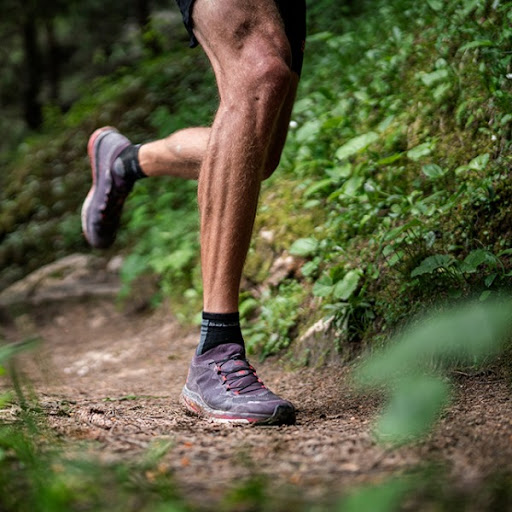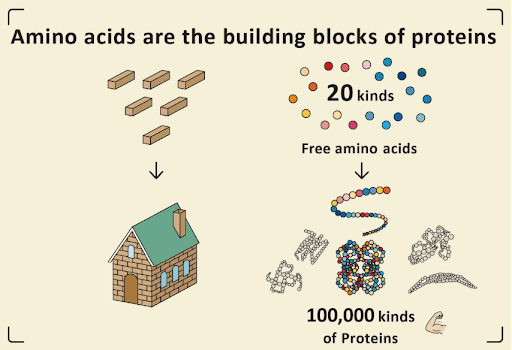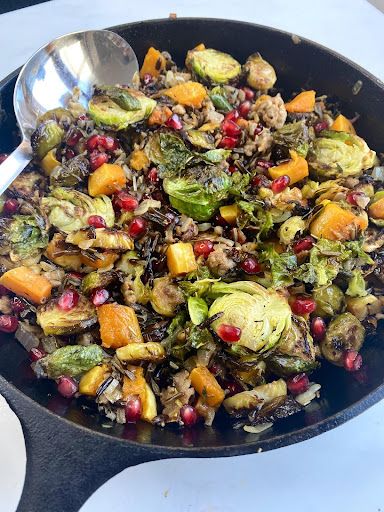I was asked to write a blog post to go along with my guest appearance for the podcast “My Wife The Dietician”. This is my response to that request:
How can someone who eats only leaves and twigs be a strong runner? Isn’t that what many people facetiously think that vegans are eating?! Of course, I jest, but the crux of the question is an honest one: if one isn’t getting their protein from animal sources, how can it be possible to be an athlete or a runner? How will we have enough energy? Read on to learn exactly how I, without really even trying to, get up to 2.5x the daily RDA of protein without eating a single bite from animal foods!
The key to being a successful runner of course begins with the training, but the real secret comes in what you do after the training: the recovery. The two most important aspects of recovery are how you fuel your body and how you sleep. We will put the sleep part aside for now, to bed if you will, and focus on fuel.

When you think of fuel, think of the calorie. While you might think of a calorie as the creature who sneaks into your closet at night and tightens all of your clothing, it’s actually just a unit of measurement of the energy found in food. Energy in this case equals fuel. You get your calories or energy from the food you eat. All food has energy to varying degrees. Fat has the most calories at 9 calories per gram while carbohydrates and protein each supply 4 calories per gram. When you are running you are using energy from predominantly carbohydrates (from its stored forms of muscle and liver glycogen) followed by fat with only a small amount of energy coming from protein. But you are of course working your muscles hard and so will need protein to rebuild those muscles after the workout concludes. The best way to aid this process is by something called the “protein-sparing effect”. Focus on first restoring the energy you used during your workout with carbohydrates and fats which allows all of the protein we take in to go towards rebuilding muscle. In practice this means the first food you eat after your workout should be predominantly carbohydrate based. This will go towards restoring the used muscle and liver glycogen stores you used up during the workout as glycogen is your body’s stored form of carbohydrates. My favorite post run recovery snack is dates and trail mix. If I’m recovering from a long run or hard workout, I will start with a homemade smoothie filled with dark leafy greens, berries, banana, dates and some seeds like hemp and chia. This liquid recovery speeds the digestion and subsequent absorption of nutrients thus speeding the recovery process. A short time later, I will have a more substantial meal like a tofu scramble, granola with fruit or savory oats (see below).
You can think of the protein in your body like a brick house. The bricks in this case are amino acids. There are 20 types of amino acids, 9 of which must be consumed in the food you eat. With only a very few exceptions, you can get all of those amino acids from plant-based sources. Your body does not discriminate between amino acids from plants or animals. An amino acid is an amino acid and if we need some to build a new structure like a muscle cell fiber, our body will use them. Our body is also extremely adept at re-using amino acids, so when our muscles get damaged during a workout, it will flush out the broken down amino acids and shuttle the others to something known as the “amino acid pool”. When your body needs to repair muscle fibers, form a new hormone, create an enzyme or build any number of proteins in the body, it simply draws upon the amino acids found in the amino acid pool and gets to work.

So if you choose to avoid eating animal products, you simply need to eat a wide variety of plant based foods to get all of your essential amino acids and you will be well-fueled to power your recovery after training. Getting sufficient calories is important no matter if you are an omnivore or an herbivore, so if you are new to eating plant-based you will probably find your portion sizes need to increase and you may need to eat a bit more often. Like doing anything new, there is an adjustment period and it’s important to be patient and kind to yourself. Counting your calories in vs out by using a nutrition app such as Chronometer or My Fitness Pal is also very helpful to ensure you are taking in sufficient calories. It’s also important to keep an eye on your weight and ensure you are maintaining weight when transitioning from an omnivorous diet to a plant-based one. If part of your goal is to lose weight, then limit your weight loss by managing calories to 1-2 lbs loss per week.
There are some plant-based foods that are more protein dense than others and so if you want to emphasize protein post workout, you can gear these into your post-run meal. Legumes, aka beans and lentils, are packed with protein as are nuts and seeds. Yes, like the children’s song says, “eat beans with every meal!”. Close behind are your whole grains especially the powerhouses buckwheat, quinoa and teff. You may be surprised to learn that per calorie, broccoli has more protein than a steak, so you can also eat all of your veggies and rest assured you are getting your amino acids as well!

Let’s sum this up with a quick sample menu for a day. This is how a day for me might look and could easily look for you as well!
Long run or workout day:
*On a day like this I would expect a person of my size and speed to burn roughly 4000 calories with this run and my normal daily BMR
6:00 a.m. – wake-up and eat a banana, a home-made oat bar w/ chia and hemp seeds and drink some tea
7:00 a.m. – 15 mile hilly trail run for 2 hours
Consumed during run in addition to water: 1 scoop UCAN energy drink, 4 medjool dates
9:00 a.m. – (while stretching and warming down) – smoothie with dates, banana, buckwheat, hemp seeds, spirulina, maca powder and water
10:00 a.m. – (After warm-down and shower) – Savory Oats w/ veggies, greens, avocado, pumpkin seeds and Nooch!
1:00 p.m. – lunch of veggie pita sandwiches with homemade beet hummus
3:00 p.m. – apple and orange as a snack
5:30 p.m. – Dinner of Brussel sprout /butternut squash “hash” with smoky marinated tempeh
Totals ~3950 Calories
Protein: 147g – 15%
Carbohydrates: 688g – 70%
Fat: 72g – 16%
Fiber: 142g